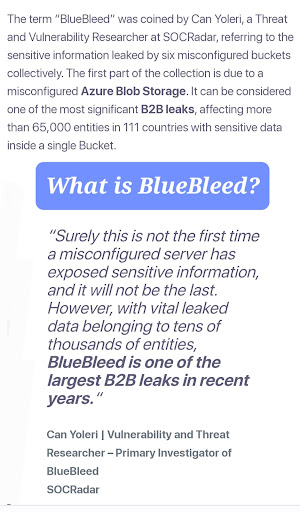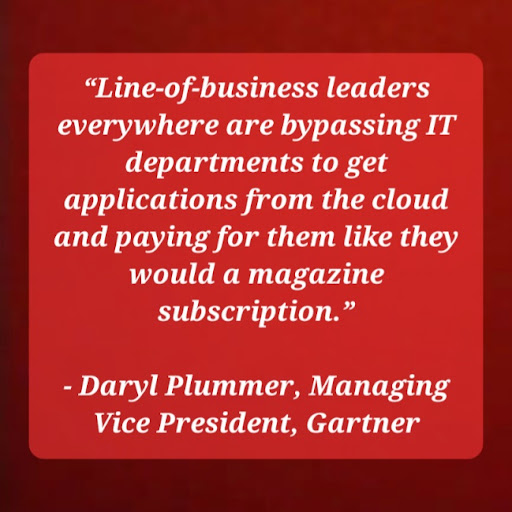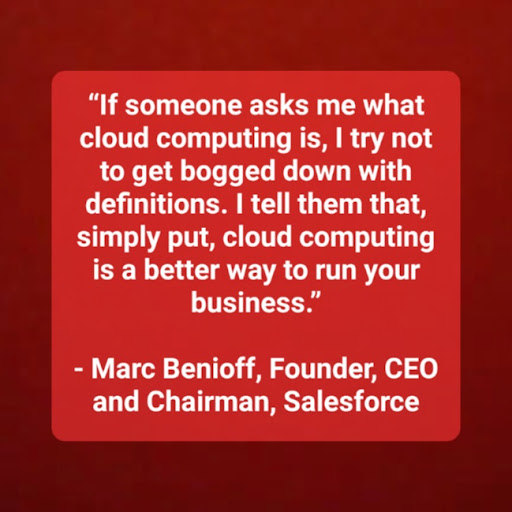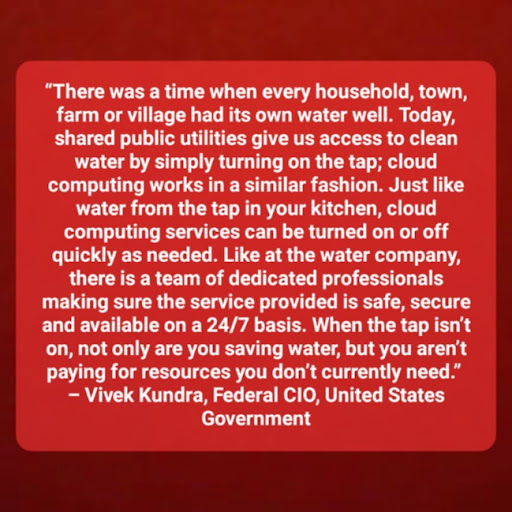Is Cloud Computing
The Way To Go?
Cloud computing is the on-demand availability of computer system resources, especially data storage and computing power, without direct active management by the user.
But recently, there is some news below that might make us have great concerns and worries after reading it.
- To Cloud Or Not To Cloud
- Kakao co-CEO resigns after outage that hit millions caused chaos
- Was moving to the cloud a mistake?
The enlightened knowledge gained from reading the above news poses more questions than solvable answers.

Some of the common concerns with Cloud Computing can be boiled down to these problems:
- It is difficult to store large amounts of information without overloading traditional computer systems.
- It is difficult to protect great volumes of digital data when it is being stored.
- The resources required to constantly manage and maintain digital data accurately can be expensive/costly.
- Data Privacy/Confidentiality – Placing data on the cloud has its advantages but also has created major security concerns for many organisations who have adopted cloud computing but lack the knowledge to ensure that they and their employees are using it securely.
- Security Issue is the topmost concern in investing in cloud services and consider Password Security, for example. As large numbers of people access your cloud account, it becomes vulnerable.
- Cloud Storage:
- Unauthorised access to customer and business data.
- Security risks at the vendor.
- Compliance and legal risks.
- Risks related to lack of control.
- Availability risks.
The above list of concerns is exhaustively lengthy and last but not least, the cloud, like any other IT set-up, can experience technical problems such as reboots, network outages and downtime. These events can incapacitate business operations and processes, and can be damaging to business. Businesses on Cloud should plan for cloud downtime and business continuity.
I do not doubt and I am very confident to dare state that there are many proponents of Cloud Computing platforms with the notion of the on-demand availability of computer system resources, especially data storage and computing power, without direct active management by the user where larger clouds often have functions distributed over multiple locations, each location being a data centre.
On the flip side of the coin, there are also proponents of Cloud Computing who have admitted regret migrating. A good number of these proponents became wary of how some businesses seem to think moving everything into the cloud is the way to go. The more they worked with cloud the more they came to the conclusion that cloud can have some big drawbacks. One of the biggest regrets for some were moving the file server to the cloud which caused issues due to not having a big enough internet connection thus some issues with files being slow to open or failing to save encounters. Office 365 migrations to Cloud encountered complications both during and since the migration.
In 2018, majority of the Australian C-Level Executives experienced cloud migration regret, with 97% of CxOs saying they would have made different strategic decisions during their first cloud migration.
This was according to the then new and independent research commissioned by Rackspace, that surveyed more than 200 Australia C-Level Executives, including CEOs, CIOs and CFOs. The aim of the research was to determine the main objectives, expectations, and experiences of executives from cloud migrations.
The top regret was not seeking more information during the cloud migration process (62%), while 28% of respondents wished they had conducted more cost-benefit analysis on chosen cloud capabilities.
Remember this:
Cloud computing is not for everyone.
Not every application qualifies for the cloud. Not everyone is ready for the cloud, for various valid reasons, not just technical such as lack of trust, latency, application readiness and last but not least, costs.
There are numerous reasons why it may be better to forget about the cloud and move back to the Data Centre.
Some of The Reasons to Consider Cloud Computing
-
Strict Regulation/Restrictions
This is one of the biggest obstacles that may prevent one from moving to the cloud. Regulations may depend on the geographical region or the industry sector. Governments may impose limitations on whether one can store sensitive data outside of one’s Data Centre, and on what terms. Especially financial and healthcare data is subject to strict regulations on storage. One’s decision on the shift to the cloud may depend on the local regulations. Also bear in mind that the major cloud computing providers in the world are US-based and therefore they are subject to data requests by the US government and agencies. On the other side of the globe, there is the General Data Protection Regulation (GDPR) put forward by the European Union, which one will need to follow if one is processing personal data of EU citizens, even if one’s company is not EU-based. GDPR came into force on May 25th, 2018.
One shall need to use extra caution not to violate any regulations when moving data to the cloud. If one cannot or does not want to follow the legal procedures, it will be better to keep one’s data in one’s local Data Centre.
It is worth considering a hybrid solution: move whatever one can to the cloud but store and process sensitive data locally/on-premise.
-
Incompatible applications
Primary Applications do not leverage the benefits of cloud computing. They work best in a local DC, using local VMs, local storage, and the local database. That is not surprising; no one planned for the cloud during the development.
Despite that, you lifted and shifted the applications to the cloud, providing the same resources you had in your DC. After the migration, it turned out that the only change that you noticed has been for the worse. The cost has risen.
-
Heavy-loaded VMs working 24/7
Reproducing an existing virtual environment in the cloud may not be cost-effective. One will reap the benefits of the cloud if one can optimise the machines, move to smaller ones, stop running on-demand and leverage the auto-scale feature. If one is planning to lift and shift and leave all the machines as they are, it may not be a good idea or at least not the cheapest one.
-
Data location concerns
Where is your data? In the cloud, of course. That is as specific as it gets. You know the region where your data is stored. You probably will also be able to identify the Data Centre. However, it is impossible to point exactly to the rack or the physical storage with your data. If that makes you feel uncomfortable, the cloud is not for you and you should retreat to DC. By the way, what is the benefit of knowing where one’s data is physically stored? What is important is to make sure that it will not be moved out of the region of storage and ensure that is guaranteed. Every cloud provider attests that data is stored in the region you upload it to. That should be enough to put one’s mind at ease.
-
Lack of Trust
One mistrusts the cloud in general, as one is not sure if one’s data and resources are secure. A physical Data Centre looks like a much safer option because one can control it physically, one is in charge of the network security with the sophisticated appliances guarding the data and protecting from hackers, and the Cloud seems to be having too many vulnerabilities. If that is the sentiment, move back to the Data Centre, and provide as much security there as one can.The question comes to mind, are these concerns well-founded? Is the cloud not secure? Cloud Providers take great care to protect physical locations. They strictly control access so that no unauthorised person can get inside. They provide redundant power and devices to ensure that everything will work uninterrupted. Bet your last dollar the physical security and device redundancy will match what one is able to provide on-premise.
In the shared security model, all of the above aspects may or may not be one’s responsibility, the same way as in one’s Data Centre. If you wish to protect your resources with firewalls or other sophisticated devices in the cloud, you’re free to do it. You may choose services from a marketplace and use exactly the same ones as in your Data Centre.
-
Unlimited customisation
When on-premise, one can customise everything according to one’s needs. It is not as easy with the cloud. Nevertheless, cloud providers are constantly increasing the level of customisation to satisfy the customer demand. Moreover, when you build your own cloud-native application, you can customise it in the same manner as on-premises.
-
Speed
Anyone who does backups have to assume that one day they will probably have to be recovered. Most likely in a hurry. If you keep backups for local systems in a cloud, recovering may be difficult.
If all backups are in the cloud, the speed of cloud connectivity may be a bottleneck.
-
Cloud Vendors’ Customer Support
When you encounter any issue with your local environment, there is your local management team available to solve all problems as soon as possible. If they fail to do that, you can push on them. If that fails, you escalate the issue to the responsible engineer, using any available means of verbal persuasion to get them to resolve the problem.
Unfortunately, one of the above works in the cloud, so if those are your preferred ways of handling problems, you should consider moving back to the Data Centre.
When in the cloud, in case of any failure or another problem, you first need to call customer support, wait in a queue and have the issue solved according to the SLA.
In return, you get a service that is available 24/7, with no PTOs (Paid Time Off) and no sick leave. The support is at your disposal any time you need it. Of course, this is a paid service.
-
Delegating responsibility
If you seek full control over your systems, wish to decide when and what to upgrade, want to use very specific and rare operation systems, database servers, etc., it is wiser you remain on land, on-premise or move back to the Data Centre.
When using Platform as a Service (PaaS) in the cloud, the cloud vendor is responsible for patching, updating, and upgrading. If you want to control these operations, an on-premises Data Centre would be the best solution. The advantage of the PaaS approach is that a cloud vendor keeps the platform up to date for you. You do not have to worry about tests and implementation.
All you have to do is to provide a maintenance window for the maintenance works.
-
Size
Your business has grown so much that it is too big for the cloud. No way, Jose? Not possible? Wrong, it can. Dropbox announced that they were leaving Amazon and moving to their own infrastructure. They were so big that it was cheaper for them not to be on the cloud. So they built their own vast computer network and shifted Dropbox services into it.
Thanks to economies of scale, global cloud providers like Amazon, Microsoft or Google can keep prices at a low level. However, they run their businesses to earn money. If you are big enough, you can abandon the cloud to save money. If you are gigantic, leave the public cloud behind and build your own. There is no other option.
So, will you remain on land or on cloud?
From the examples above, we can rebut every claim in favour of staying in the Data Centre. Cloud solutions offer the same possibilities as an on-premise Data Centre with the flexibility of adding and removing resources within minutes. For sure, cloud migration will require extra work, redesigning or additional planning.
No pain, no gain but on the whole, the cloud has more pros than cons.



More explanation about what is cloud computing.
Catch When Expert Meets Expert by Eugene Chung articles every bi-weekly Tuesday. Don’t forget to subscribe to stay connected. You are also encouraged to ask questions and seek advice from him.
Share this post
Related Posts

Cybersecurity: Achieving the ‘Hole-in-One’ of Digital Defence
- 07 Nov 2023
- By:Bernadetta Septarini
- Category: When Experts Meet Experts (WEME)
Discover the connection between cybersecurity and sports with Tony Smith, Regional VP at WithSecure. Let’s achieve the ‘Hole-in-One’ of Digital Defense.

Beware of Scare Software aka Scareware
- 21 Nov 2022
- By:Eugene Chung
- Category: When Experts Meet Experts (WEME)
What is Scare Software or Scareware? Learn more about this Social Engineering technique that aimed to scare the victim with ArmourZero mentor Eugene Chung.

Job Hunting Tips for IT Graduates
- 14 Nov 2022
- By:Ts. Saiful Bakhtiar Osman
- Category: When Experts Meet Experts (WEME)
The job market is tough and competitive. Learn some tips on how to do job hunting for IT graduates from ArmourZero’s mentor and expert Ts. Saiful Bakhtiar.

Tips to Successfully Sell a Credible Cybersecurity Solution
- 07 Nov 2022
- By:Eugene Chung
- Category: When Experts Meet Experts (WEME)
How do Cybersecurity sales convince prospects to trust their services and/or products? Learn more about it from ArmourZero’s mentor and expert Eugene Chung.

